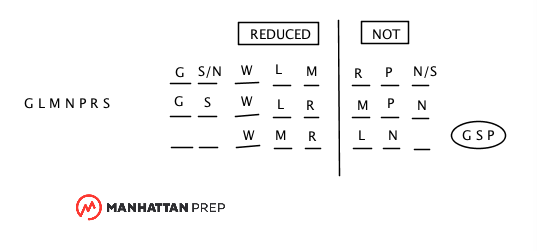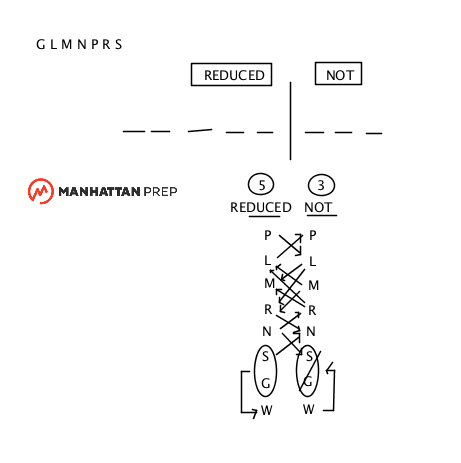
If you want to frame, the LMR--choose 2 rule--is a good one for creating frames.
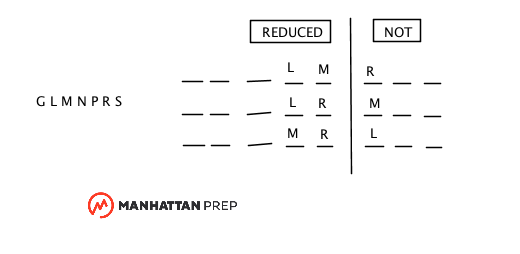
P and L cannot both be reduced.

N and R cannot both be reduced.
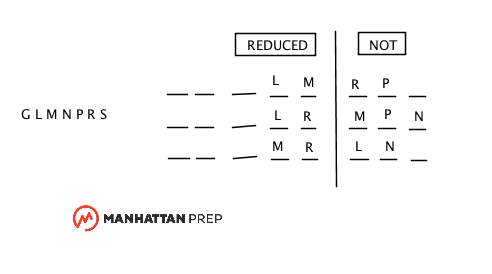
Which means in frame 2, G, S, and W must all be in.
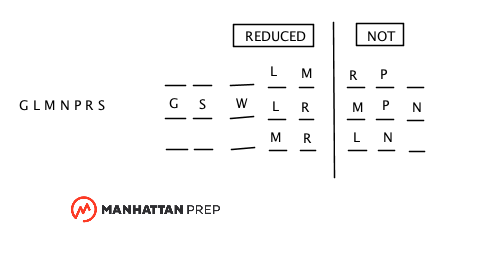
There's no room for W in the not reduced column, since W out would require either G or S out as well.
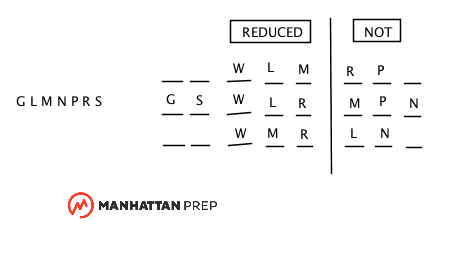
N and S cannot both be reduced.
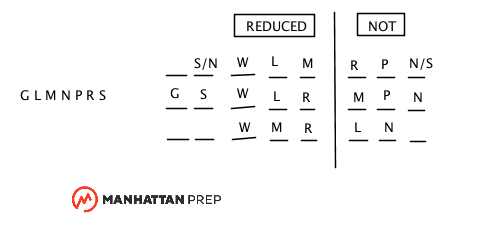
So G must be reduced in frame 1.
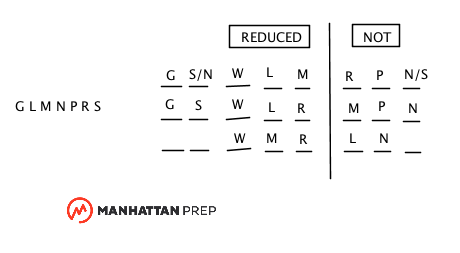
That leaves G, S, and P to float in frame 3.
